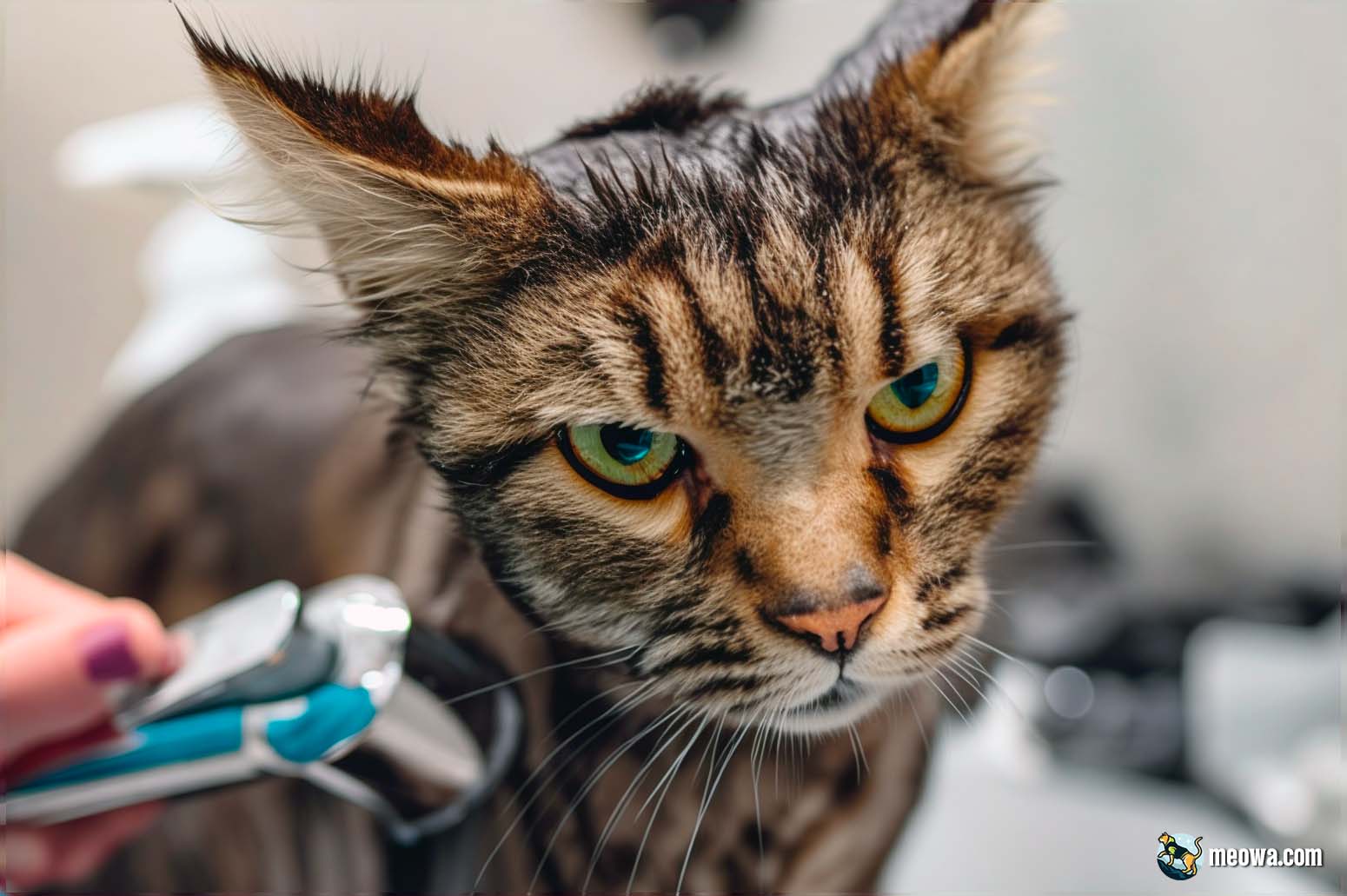How to Groom a Cat That Hates It: Turning the Impossible into Routine
If cats had a middle name, I’m convinced it would be “Contrary.” Cats are creatures that walk the fine line between the regal elegance of a lion and the whimsical mischief of an alley cat. They’re charming, lovable, independent, and at times, the epitome of stubbornness. It’s these very qualities that make them an enigma and a source of great hilarity. Case in point? Grooming time.
Picture this: You have everything prepared – the right brush, a tranquil ambiance, your best soothing voice. You’ve read every article on ‘how to groom a cat that hates it,’ watched countless YouTube videos, and even invested in a fancy grooming kit that promises ‘hassle-free’ grooming. But then comes the moment of truth. You reach out to your cat, and just like that, your loving, purring fur baby transforms into a hissing, spitting, claw-swiping gremlin. Oh, the joys of cat grooming!
But before you resign yourself to living with a furball monster, take heart. Grooming a cat that hates it might seem like trying to solve a Rubik’s cube blindfolded, but it’s not impossible. This blog post is going to guide you through a comprehensive journey into the world of cat grooming. We’ll delve into why cats detest grooming, how to create a positive association with the process, and offer a step-by-step guide on how to groom your feisty feline effectively without sacrificing your sanity or your skin.
Cat grooming isn’t just about keeping your cat looking its Instagram-worthy best. It’s crucial for their health and well-being, helping to keep their coat free from mats, reducing hairballs, and letting you check for any abnormalities or parasites.
How to groom a cat that hates it?
The trick to grooming a cat that hates it lies in a patient approach, starting slow, creating positive associations with the grooming process, using the right tools, and, if all else fails, seeking professional help. Keep grooming sessions short, use treats as positive reinforcement, and remember to keep the experience as stress-free as possible for your cat.
Read on to explore these methods and more, for turning your feisty feline into a grooming enthusiast. These are proven techniques to make the grooming process a joy rather than a chore.
So, take a deep breath, cat warriors. Put on your armor (or at least some thick gloves) and prepare yourself. It’s time to conquer the battlefield that is grooming your cat!
Deciphering the Enigma: Why Some Cats Hate Grooming
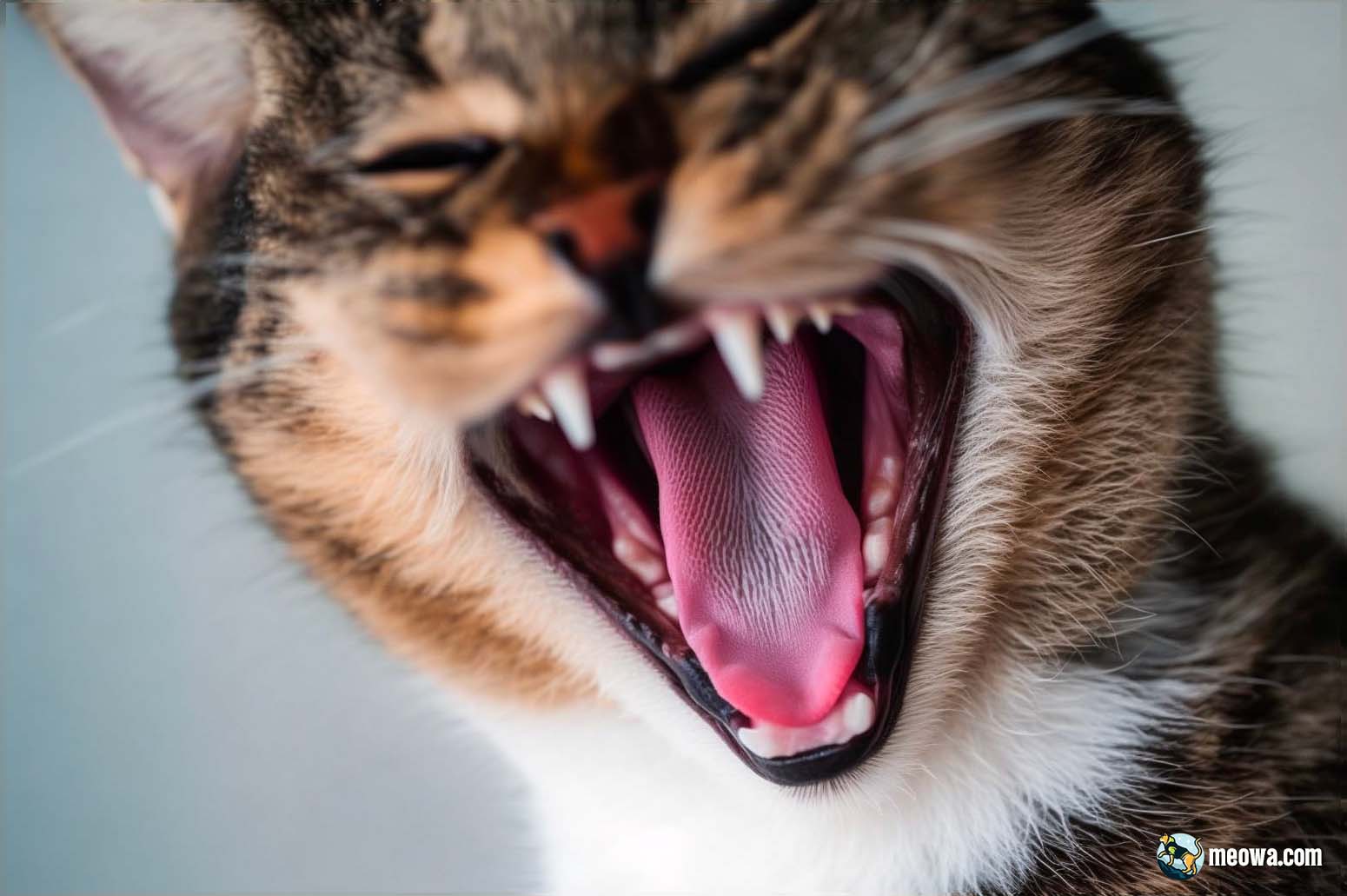
Cats are the epitome of cleanliness. They spend up to 50% of their waking hours grooming themselves – a behavior known as ‘allogrooming.’ It’s a routine that makes them look impeccably neat, keeps their fur soft, and even helps them regulate their body temperature. So, when it comes to us humans stepping in and attempting to do the grooming for them, some cats look at us like we’ve just suggested a dip in the Arctic Ocean. Let’s try to unravel this paradox.
Sensory Overload
Cats are sensory superstars. They are built with an impressive sensitivity to touch, sound, and even vibration. Their fur is not just a stylish coat; it’s an extension of their nervous system, teeming with nerve endings that send signals to their brain. When you groom them, especially if not done properly, it could overwhelm their senses, leading to discomfort or even pain. This can easily explain why your cat might turn into a mini-tiger at the sight of a brush.
Bad Experiences
Cats are creatures of habit and they have good memory. If they’ve had a painful or uncomfortable grooming experience in the past, they’re not likely to forget it soon. It could be a roughly handled brush session, a nick while getting their nails trimmed, or a traumatizing bath. The negative association builds up, and soon, even the gentlest attempt at grooming might set them off.
Lack of Early Exposure
The key to many cat behaviors, including acceptance of grooming, lies in their early kittenhood experiences. Cats that were introduced to gentle brushing and handling when they were kittens tend to accept grooming more readily as they grow up. If your cat missed out on these early experiences, grooming might seem alien and stressful to them.
Health Issues
Sometimes, the aversion to grooming might be a sign of underlying health issues. It could be a painful dental problem that makes it hurt when your cat grooms itself. Arthritis can make it difficult for them to reach certain areas. Skin conditions could make brushing painful. If your cat is particularly averse to grooming, a trip to the vet might be a good idea.
Fear and Anxiety
Lastly, fear and anxiety can make your cat resist grooming. The sound of electric clippers, the unfamiliar scent of grooming products, or even being restrained for grooming could trigger their fight or flight response. In this case, patience and gradual exposure are key.
Understanding why your cat hates grooming is the first step to creating a positive grooming experience. Like solving a mystery, it involves piecing together the clues your cat gives you and being patient as you try to decode their unique language.
Now that we’ve delved into the reasons, we’re ready to tackle the ‘how-to’ part of grooming a cat that hates it. Buckle up and keep your scratch-resistant gloves handy!
The Essential Grooming Kit: Choosing the Right Tools
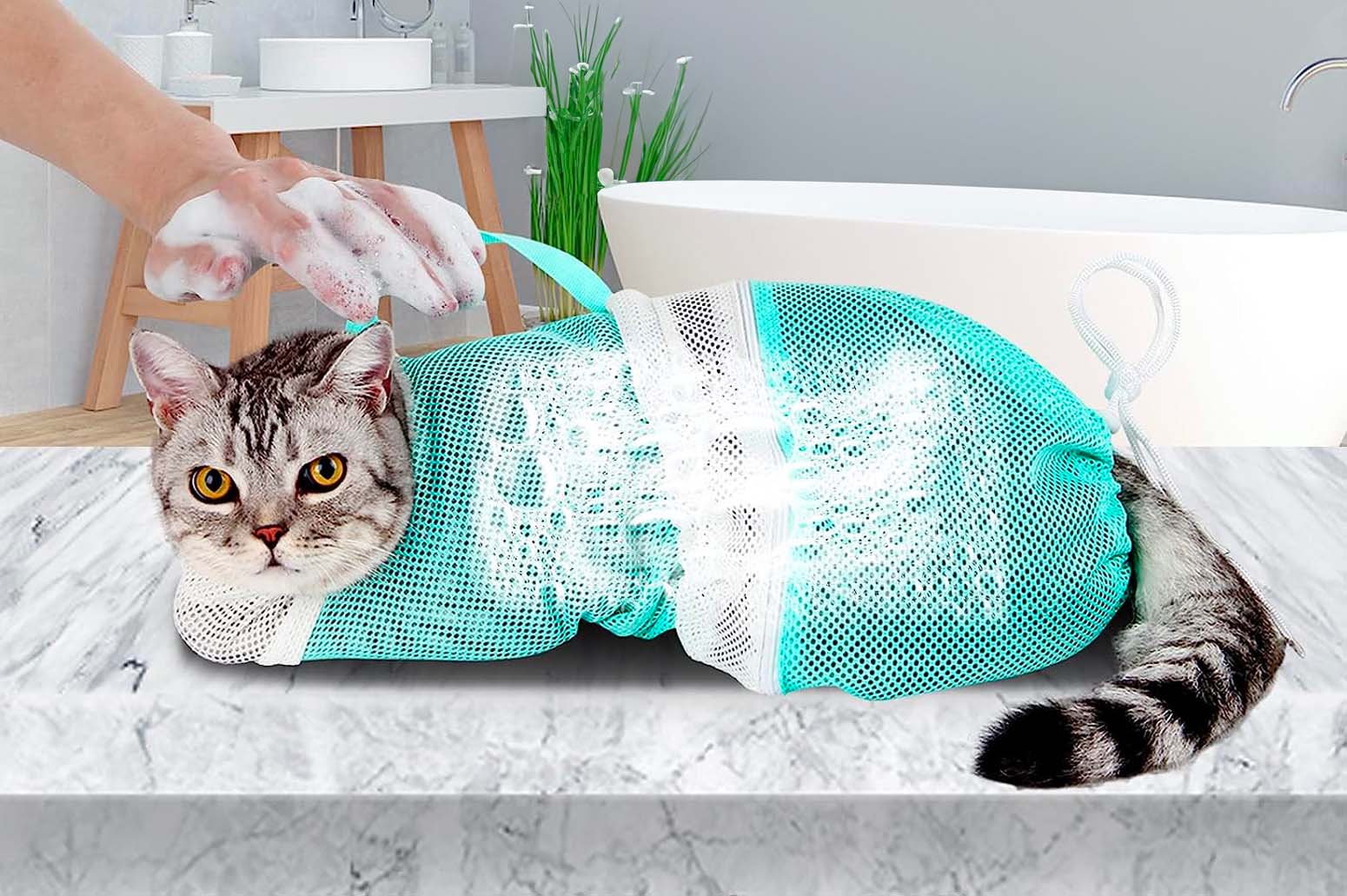
Equipping yourself with the right grooming tools is akin to a knight arming themselves for battle. Except, in this case, your dragon is a fluffy and adorable, albeit irate, feline. As a self-proclaimed cat whisperer (and who are we kidding, a tad bit of a cat psychologist), here’s my run-down on what should be in your ultimate cat grooming kit.
The Perfect Brush
Choosing the right brush for your cat is crucial. Some cats might prefer a soft-bristled brush, while others might enjoy the feel of a slicker brush. A good place to start is a rubber grooming mitt. They’re gentle, and they often feel more like petting than brushing, so they can be less intimidating for your cat.
But, don’t get complacent and settle for the first brush that works. Cats, much like humans, change their preferences faster than a chameleon changes color. o help you navigate through this process, you might want to check out our guide on the best brushes for long-haired cats. Keep an eye on your cat’s reactions to different brushes. If you notice your cat becoming uncomfortable, switch it up!
The Claw Clipper
Your secret weapon against becoming a human pin-cushion. A pair of good quality cat nail clippers is essential. You want something small, sharp, and easy to handle. If the very thought of trimming your cat’s nails gives you palpitations, you might want to consider a grinder instead. They’re gentle, efficient, and make it less likely that you’ll accidentally clip into the quick of the nail.
The Cat Comb
For cats with longer hair, a comb can be a useful tool. It can help to tease out knots and mats that a brush might miss. Remember to use it gently – pulling too hard on tangles can hurt your cat.
Grooming Wipes and Cat Shampoo
Let’s face it, cats and water go together about as well as chalk and cheese. Grooming wipes can be a godsend for a quick clean-up. Opt for unscented ones to avoid upsetting your cat’s sensitive nose.
On those rare occasions when a bath becomes inevitable (Yes, we’re talking about that time Mr. Fluffles decided to roll in the mud), a gentle cat shampoo is a must-have.
The Reward
Your secret sauce, your ace in the hole – a bag of your cat’s favorite treats. Positive reinforcement goes a long way in making the grooming experience more enjoyable for your cat.
Armed with this ultimate grooming kit, you are one step closer to making the grooming process a bit more bearable for your fussy feline. It’s all about being gentle, patient, and attentive to their reactions. Remember, a calm cat is a groom-able cat.
The Science of Cat Whispering: How to Form a Positive Association with Grooming
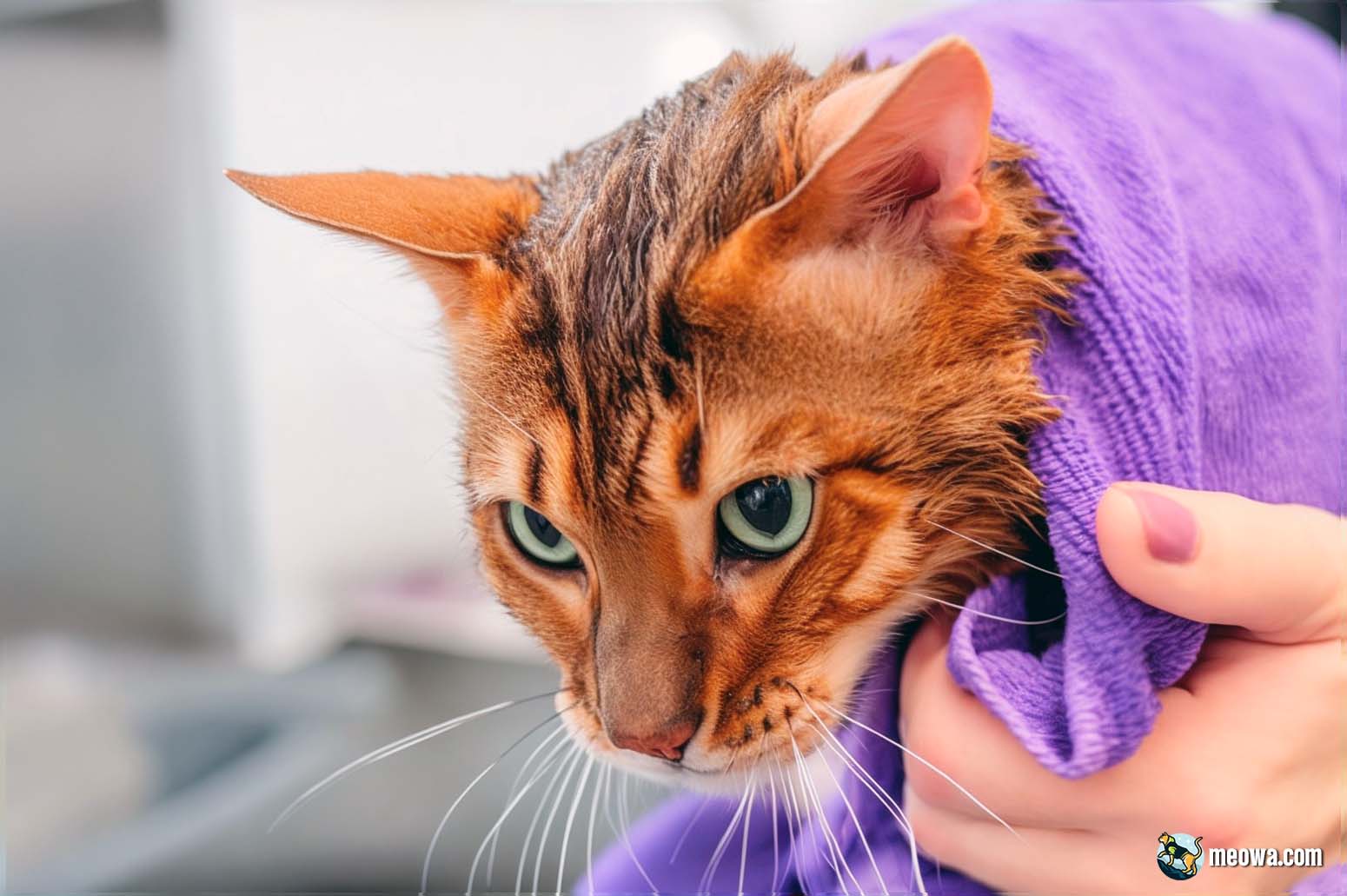
Ah, the art of cat whispering – an elite discipline where only the bravest (and perhaps most foolish) dare to venture. Fear not, dear reader! By the time you’re through with this section, you’ll be fluent in feline-ese and ready to turn grooming time into an anticipated event rather than a catastrophe (get it?).
The Magic of Routine
Cats, like most creatures, are creatures of habit. Establishing a regular grooming routine can help your cat understand that grooming is a normal part of their life. However, it’s essential not to be too rigid with this routine. After all, you’re dealing with a being that holds the wisdom of the sphinx and the whimsy of a furball at the same time. A little flexibility goes a long way!
Purr-fect Timing
Ever tried brushing your cat when they’re in the middle of their crazy hour? Yeah, not the best idea. Aim for grooming sessions when your cat is naturally calm and relaxed, perhaps after mealtime or playtime. Identifying your cat’s “chill time” will make the grooming process smoother.
The Treat Principle
We’ve all been there – doing something we don’t want to, lured by the promise of a treat at the end. Why should it be any different for cats? By offering a treat after every successful grooming session, you associate grooming with a positive reward. Over time, your cat might just start looking forward to being brushed. Yes, it sounds like a fantasy, but trust me, it happens!
Keep It Short, Silly
When it comes to grooming sessions, think sprint, not marathon. Short and frequent sessions are much more manageable for a cat that hates grooming than long, infrequent ones. Gradually increase the duration as your cat becomes more comfortable.
Gentle Praise
Remember the magic of praise and positive reinforcement. Cats might pretend to be aloof and uncaring, but deep down, they’re just as susceptible to a kind word and gentle petting as the rest of us.
With these tips, you’re well on your way to becoming the ultimate cat whisperer, and grooming will soon turn from a dreaded chore to a cherished bonding session. The secret is patience, persistence, and a dash of good humor.
Getting Your Cat Comfortable for Grooming
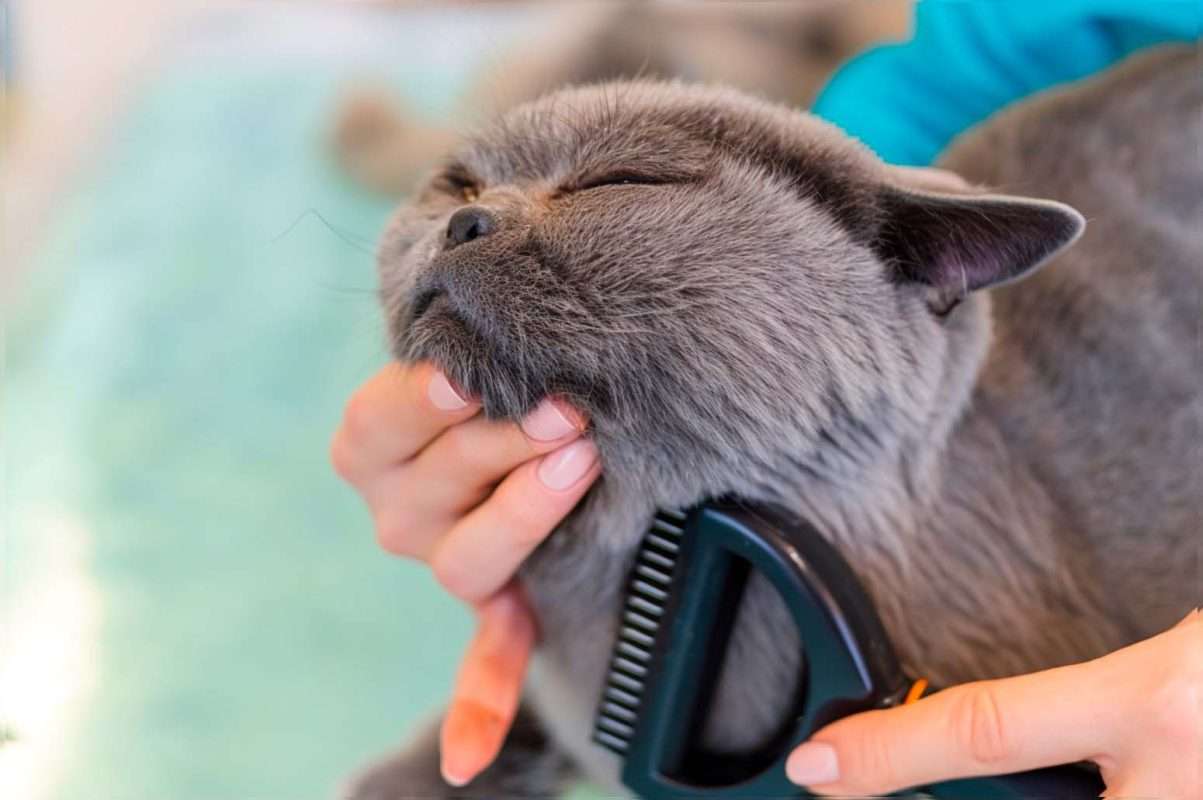
Before we dive into the grooming process itself, let’s create a zen-like atmosphere that your cat will find irresistible (or at least tolerable). Preparing your cat and setting up the right environment can often make or break a grooming session. So, let’s get to it!
Nail Trimming: The Pre-grooming Ritual
If the thought of trimming your cat’s nails makes you break out in a cold sweat, you’re not alone. But, as the saying goes, knowledge is power. By understanding the process and following a few key steps, you can trim your cat’s nails without turning your living room into a battlefield.
- Inspect the Claw: Press your cat’s paw gently to extend the nails. Look for the translucent area (the quick) where blood vessels are visible. You want to avoid cutting into this part.
- Choose the Right Tool: Cat nail clippers or human baby nail clippers are ideal. Make sure they are sharp to avoid crushing the nail.
- Trimming: Cut off the sharp point of the nail, avoiding the quick. If you do accidentally cut into the quick, don’t panic. Use a styptic pencil or cornstarch to stop the bleeding.
- Take Breaks: Trim a few nails at a time, taking breaks in between to avoid overwhelming your cat.
- Reward: After each successful trimming session, reward your cat with a treat or playtime. This will help associate nail trimming with positive experiences.
Creating the Ideal Grooming Environment
Cats, like us humans, are quite sensitive to their surroundings. A calm, quiet, and comfortable space can significantly reduce your cat’s stress levels during grooming.
- Choose a Familiar Place: Avoid places that your cat associates with negative experiences, like the carrier or the vet’s office.
- Minimize Noise: Keep the environment quiet. Loud noises can startle your cat and increase their anxiety.
- Comfort Matters: Have a soft towel or a comfy pet bed at hand. If your cat is comfortable, they’re more likely to stay put.
- Have Everything Ready: Having all your grooming tools at hand before starting can help reduce breaks and make the process smoother.
The Art of Timing
You’ve heard it before, and I’ll say it again – timing is everything! Groom your cat when they’re already relaxed, like after a meal or a play session. Avoid grooming when your cat is energetic or anxious, as this can make the process more challenging.
The Power of Praise and Treats
Never underestimate the power of a well-timed compliment or a delicious treat. After each successful grooming session (or even during!), give your cat a reward. This can be a favorite treat, some playtime, or just a good old belly rub.
Remember, grooming your cat is not just about keeping their fur tangle-free. It’s also a bonding activity that can bring you closer together. So, keep it positive, keep it light, and don’t forget to have fun!
The Step-by-Step Guide to Grooming a Cat that Hates It
When it comes to how to groom a cat that hates it, you must tread carefully and be prepared to deal with some feline mood swings. Here’s a detailed, step-by-step guide that’ll help keep those claws at bay and get your kitty looking purr-fect in no time.
Step 1: Introduce the Tools
The first step to grooming a cat that hates it is to familiarize them with the grooming tools. Present them to your cat during a calm, relaxed moment. Place them on the floor and let your cat sniff and explore them. Encourage your cat’s curiosity by associating the tools with something positive, like their favorite treats or a little catnip smeared on the brushes. Over time, your cat will start recognizing the tools as non-threatening objects, reducing their anxiety when you eventually use them for grooming. Consistency is key here. Introduce the tools regularly, ideally during each grooming session.
Tip: Play soft and calm cat music while you show your cat the tools. This will further promote a calm environment and help your cat associate the tools with positive, relaxing experiences.
Step 2: Brushing
Begin with brushing, as it’s less invasive and a good way to ease your cat into the grooming process. Identify the areas where your cat enjoys being touched—these are usually the head, chin, and base of the tail. Start with these comfort zones, gradually extending to other parts of the body. Make sure to use gentle strokes and maintain a calm demeanor. The less stressed you are, the more comfortable your cat will feel. Brush with the direction of hair growth, from head to tail. If your cat starts getting antsy, take a break and try again later. Keep these initial sessions under 5 minutes and reward them with treats and praise.
Tip: Try using a grooming glove initially. Your cat might accept it more easily than a brush as it mimics petting.
Step 3: Combing
After brushing, use a comb to reach deeper into your cat’s fur. The combing process is similar to brushing; start at the head and move towards the tail, following the direction of hair growth. Remember to be extra gentle when encountering knots or matted fur—forceful combing can cause pain and increase your cat’s resistance to grooming.
Tip: Use a detangling spray or a special dematting tool to make the process easier and more comfortable for your cat.
Step 4: Ear Cleaning
Cats are sensitive about their ears, so ear cleaning requires a gentle touch. Use a cotton ball or gauze soaked in a cat-approved ear cleaning solution, and clean the visible part of the ear canal and the outer ear. Never insert anything into the ear canal, as this can lead to injuries.
Tip: Try the “purrito” method, wrapping your cat in a towel with only their head exposed, if they resist ear cleaning.
Step 5: Dental Care
Cat dental hygiene is critical, but many cats aren’t fans of having their teeth brushed. Introduce dental care gradually, starting by letting your cat lick some cat-friendly toothpaste off the brush. This will help them get used to the taste. When brushing, focus on the gum line, where tartar and plaque build up.
Tip: Start with short brushing sessions, and gradually increase the duration as your cat gets more comfortable.
Step 6: Nail Trimming
Trimming your cat’s nails can be challenging, especially if they’re resistant. Only trim the translucent tip of the nail, avoiding the pinkish quick, which can bleed if cut.
Tip: Having a helper can make nail trimming easier—one person can hold the cat while the other trims the nails.
Step 7: Bathing
If your cat absolutely despises water, consider using a cat-specific dry shampoo or grooming wipes instead of a traditional bath. However, if a bath is unavoidable, fill a tub or sink with warm water just up to your cat’s belly. Use a cup or a handheld shower head to wet your cat from neck to tail, avoiding the head and face.
Tip: Use cat-friendly shampoo and rinse thoroughly to avoid any residue that can irritate your cat’s skin.
Step 8: Post-Grooming Care
After the bath, wrap your cat in a soft, warm towel and gently pat them dry. Avoid rubbing, as it can cause tangles. Ensure your cat is completely dry before letting them out, especially during cold weather.
Tip: Use a special pet dryer set on low heat if your cat tolerates the noise, as human hair dryers can get too hot for your cat’s skin.
Step 9: Frequent, Short Grooming Sessions
Finally, rather than grooming your cat all at once, aim for frequent, short grooming sessions. This is less overwhelming for your cat and can help them adjust to the grooming process over time.
Tip: Consistency is key. Try to maintain a regular grooming schedule.
Each step of this process should be introduced gradually and with a lot of patience. Make sure to reward your cat with praise and treats after each successful step. This will reinforce the positive association with grooming. Remember, your goal isn’t just to groom your cat—it’s also to create a bonding experience that both you and your feline friend can enjoy.
When Things Get Hairy: Dealing with Cat Grooming Aggression
Grooming a cat that exhibits aggressive behavior can be challenging and even intimidating. But don’t worry, with the right techniques and plenty of patience, you can make the process less stressful for both you and your furry friend.
Recognize the Warning Signs
Cats don’t resort to aggression without reason. It’s usually a response to fear, discomfort, or stress, and it’s often preceded by warning signs such as growling, hissing, flattened ears, swishing tail, and dilated pupils. As soon as you observe any of these signals, it’s best to pause the grooming session and give your cat some space.
Tip: Never force a grooming session. Pushing your cat too far might escalate the aggression and make future grooming sessions even more challenging.
Slow Down and Stay Gentle
It’s important to remain calm and patient throughout the grooming process. Abrupt movements can make your cat anxious. Always handle your cat gently, using slow, soothing strokes while brushing.
Tip: Speak softly to your cat during grooming. Your voice can be an excellent tool to reassure and calm your feline friend.
Distract and Divert
Distraction is a powerful tool in managing cat aggression. Use your cat’s favorite toys or treats to divert their attention away from grooming. This technique can be especially useful when you’re working on more sensitive areas.
Tip: Consider using puzzle feeders or treat-dispensing toys to keep your cat occupied during grooming.
Gradual Desensitization
This involves exposing your cat to grooming gradually, increasing the duration and intensity over time. Start with brief, gentle brushing sessions, and over time, as your cat becomes more comfortable, extend the grooming period.
Tip: Always end the grooming session on a positive note to build a good association. This could be a treat, a favorite game, or some cuddle time.
Aggression during grooming often stems from fear or discomfort. Therefore, making the experience comfortable and stress-free for your cat should be your ultimate goal.
When to Seek Professional Help
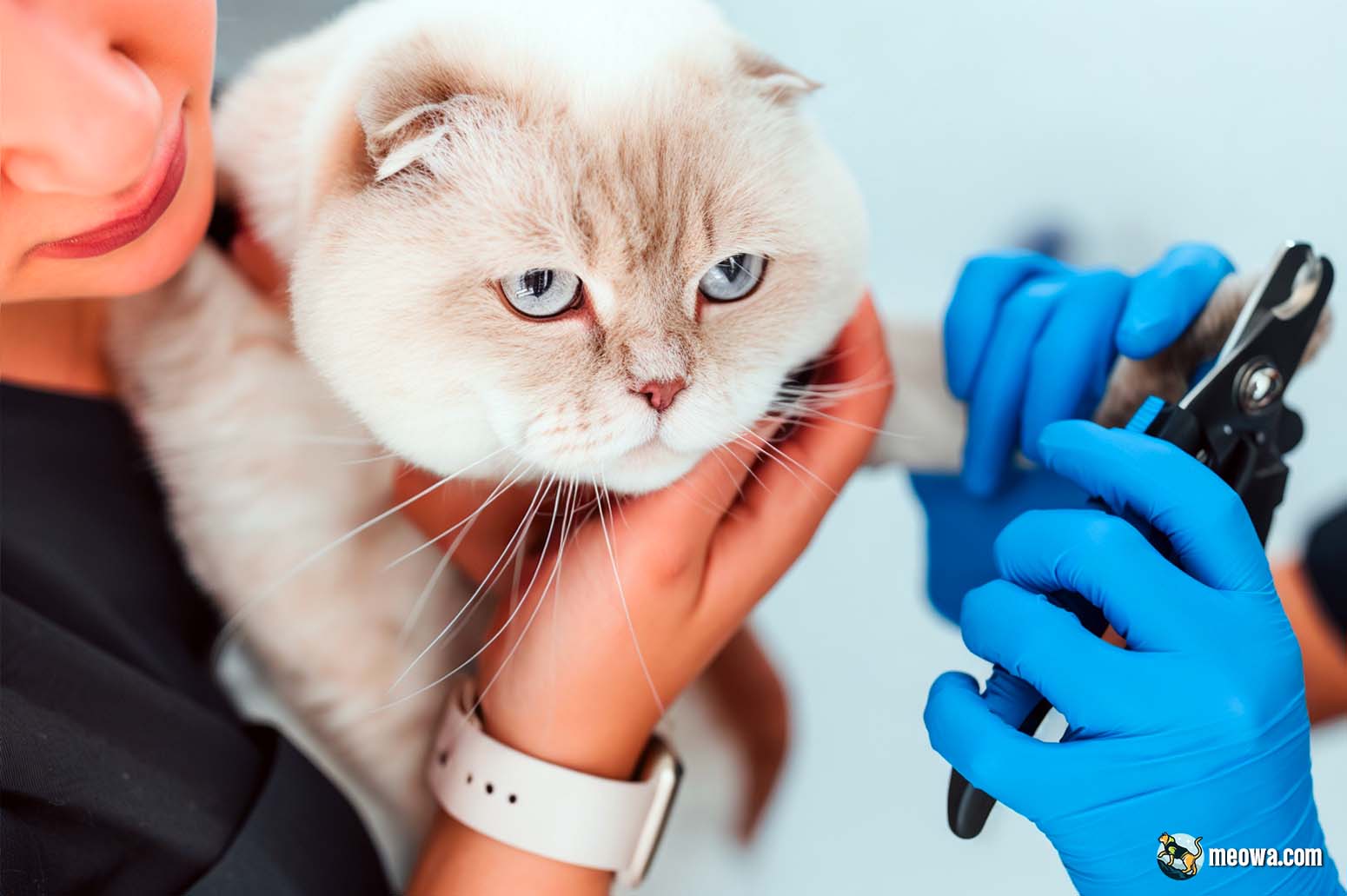
There might come a time when, despite your best efforts, grooming your cat at home is no longer feasible. Recognizing the signs that it’s time to call in a professional groomer can prevent unnecessary stress and potential injuries for both you and your cat.
When Grooming Becomes a Battle
If every grooming session turns into a battle of wills, leaving both you and your cat stressed and exhausted, it may be time to seek professional help. While it’s normal for a cat to resist grooming to some extent, extreme reactions like persistent aggression or extreme fear could indicate a need for professional intervention.
Physical Limitations
Certain physical conditions in cats can make home grooming difficult or even impossible. For instance, cats with arthritis may find grooming painful, and obese cats may struggle with self-grooming. In such cases, a professional groomer’s expertise can ensure that your cat gets the care they need without discomfort.
Advanced Grooming Needs
Sometimes, your cat might need grooming services that go beyond your capabilities, such as haircuts, mat removal, or a thorough ear cleaning. A professional groomer has the knowledge, experience, and tools necessary to handle these tasks safely and efficiently.
Tip: If your cat requires advanced grooming procedures, do not attempt them at home without proper training. This could lead to injuries.
Grooming Difficult Areas
Certain areas, like the face and belly, can be particularly difficult to groom, and cats often react aggressively when these sensitive parts are handled. In such scenarios, the controlled environment and experienced hands of a professional groomer can make all the difference.
Insight into How Professional Groomers Handle Difficult Cats
Professional groomers are trained to handle cats of all temperaments. They utilize a combination of techniques like gentle handling, distraction, and positive reinforcement, much like what we’ve discussed. They also use specific tools and equipment, such as grooming restraints, to ensure the safety and comfort of the cat. Moreover, professional groomers are skilled at reading feline body language and can adjust their approach based on your cat’s reactions.
It’s essential to choose a professional groomer who has experience with difficult cats. Before making an appointment, discuss your cat’s behavior with the groomer, so they know what to expect and can prepare accordingly.
Tip: If possible, observe the groomer in action before bringing your cat. This can give you a good idea of their handling style and how they manage stressful situations.
Your cat’s comfort and well-being are paramount. If you think a professional groomer is what your cat needs, don’t hesitate to seek one. There’s no shame in calling for backup when it’s for the sake of your feline friend’s happiness and well-being!
Cleaning Tips for Cats that Just Won’t Cooperate
No matter how much your cat despises the grooming process, it’s an essential aspect of their health and wellbeing. It’s also worth noting that not all grooming tasks are equal in the eyes of our feline friends. Some cats might resist brushing, while others find bathing utterly intolerable. Here are some strategies tailored to cleaning an uncooperative cat, focusing on brushing and bathing.
Distraction Is Key
Divert your cat’s attention away from the cleaning activity. Try using their favorite toys or feather wands during brushing sessions. For bath times, floating a few rubber ducks or ping pong balls in the tub can provide amusement and help to alleviate stress.
Tip: An automatic laser pointer toy can be a handy tool, engaging your cat in play while you quickly brush or clean them.
Make Use of Feline-Friendly Products
While some cats might loathe water, they may not mind cleaning agents. Consider cat grooming wipes for quick cleaning sessions. These are especially useful for cats who struggle with obesity or arthritis and can’t groom certain parts of their body. You can also find waterless cat shampoos on the market that simply need to be applied and then brushed out.
Tip: Use unscented grooming wipes or waterless shampoos as cats can be sensitive to smells.
Slow Introduction to Bathing
Introducing your cat to water gradually can help decrease their resistance to bathing. Start by placing them in an empty bathtub or sink, rewarding them for their calm behavior, and gradually introduce small amounts of water over time. Always use warm water, not hot, and avoid spraying water directly onto their face.
Tip: A rubber bath mat can provide secure footing and make the experience less daunting for your cat.
Employ Calming Aids
Consider using calming aids like Feliway spray, a synthetic feline facial pheromone, to create a relaxing environment. Spray it around the grooming area (but not directly on your cat) about 15 minutes before the cleaning session to help ease their anxiety.
Tip: Always use such products under a vet’s guidance to ensure they’re safe and suitable for your cat.
Conclusion
Grooming a cat that hates it is no small task, but with patience, understanding, and the right strategies, it can be made much more manageable. Remember to focus on understanding your cat’s unique dislikes and fears and tailor your approach accordingly.
The journey to positive grooming experiences is often a marathon, not a sprint, so celebrate the small victories and don’t be disheartened by the setbacks. Patience, persistence, and plenty of love are your best tools in this endeavor. Each step forward, no matter how small, brings you closer to a more harmonious grooming routine.
Never forget the importance of safety. If your cat’s reactions risk their wellbeing or yours, it’s time to consult a professional. Groomers and vets have the training and experience to handle even the most grooming-averse cats.
You’re doing this out of love for your feline friend, after all. Their health and happiness are the ultimate goals. So keep going! You’re not just a cat owner; you’re a cat parent, and there’s no challenge you can’t tackle for your fur baby.
Keep exploring our blog for more insights, tips, and advice on caring for your beloved cat. We’re here to support you on this wonderful journey of feline parenthood.
That’s the end of our post on ‘How to Groom a Cat That Hates It’. We hope you found it useful! If you have any further questions, feel free to reach out to us or drop a comment.
Frequently Asked Questions
In this section, we’re going to address some of the most frequently asked questions we encounter when it comes to grooming a cat that hates it. Each one of these is a common concern and it’s important to address them to give you a more complete understanding of the task at hand.
How can I calm my cat down for grooming?
Establishing a calm environment is critical. Reduce noise and distractions, and use a soothing tone of voice. Cats respond well to routines, so try to groom your cat at the same time each day. Use treats and praise to create positive associations. If your cat is extremely stressed, you may want to discuss calming supplements or medication with your vet.
How do you bathe a cat that hates water?
Bathing a cat that hates water is a challenge. Try using a wet towel instead of a full bath. If a bath is necessary, use a sink or shallow tub. Fill it with warm water before bringing in the cat. Let your cat investigate the water first, and then gently place them in it. Use a spray nozzle or cup to wet your cat from the neck down. Use cat-friendly shampoo, rinse thoroughly and dry with a towel immediately after.
Why does my cat bite me when I brush him?
Biting can be a sign of discomfort or fear. Make sure you’re using the right brush for your cat’s coat and that you’re not brushing too hard. Pay attention to your cat’s body language – if they seem upset, give them a break. Try to make brushing a positive experience with lots of praise and treats.
How often should you groom a cat?
This depends on your cat’s breed, age, health, and lifestyle. Long-haired breeds like Persians and Maine Coons require daily brushing to prevent mats and tangles. Short-haired cats usually do fine with a weekly brushing. Elderly, sick, or overweight cats may need more frequent grooming because they can’t do it themselves. Always check with your vet if you’re unsure.

